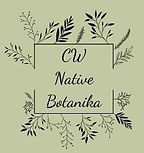CW Native Botanika Newsletter
- Kathleen Contrino

- Feb 23
- 1 min read
February 2025: American Beech
American Beech Fagus grandifolia is a native understory tree whose native range spans from Nova Scotia south to eastern Florida, then west to Wisconsin and south to eastern Texas.

Beech bark is smooth, steel grey and its leaves are simple, alternate, ovate, coarsely toothed and bristle tipped.1 The fruit is a stalked burr, covered with soft, curving prickles, containing a nut. Beech nuts are edible, and young leaves are also edible.2

Historical and Medicinal Uses:
Indigenous peoples found that beech infused water helped heal scrapes and skin diseases.3 Other uses of the American beech trees include helping with bouts of poison ivy, burns, frostbite, and ointments to repel biting insects. It was also used by the Iroquois to relieve pain during abortions. Beech nuts have tannins that make them slightly toxic but only problematic if too many are eaten. Bark and leaves reduce inflammation, relieve ulcers and clean the digestive system.
Research into the American Beech tree has discovered that Fagus sylvatica, or European Beech, bark has antioxidant and anti-microbial effects.4 Extracts of beech bark demonstrate free-radical-scavenging abilities against bacteria including P. aeruginosa and E. coli.

Importance to Wildlife:
Beechnuts is important to wildlife as they are rich in proteins and fats.5 Wildlife that rely on Beechnuts include wild turkey, squirrels, deer, among others, as well as host plant for several insects like the wooly beech aphid, moths and butterflies. Beech trees are essential to woodpeckers and cavity dwelling birds.
Resources and Learn More:
.jpg)





Comments